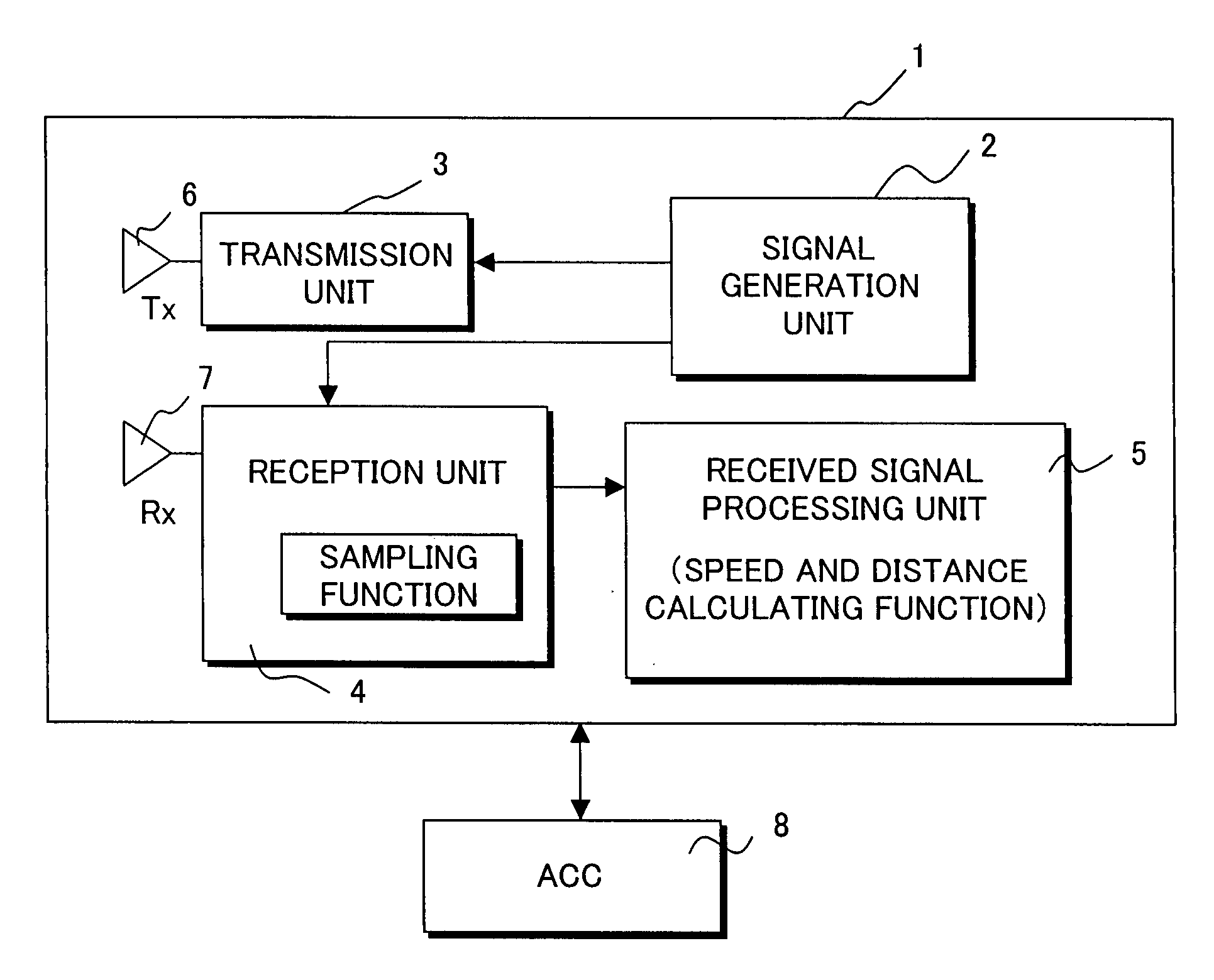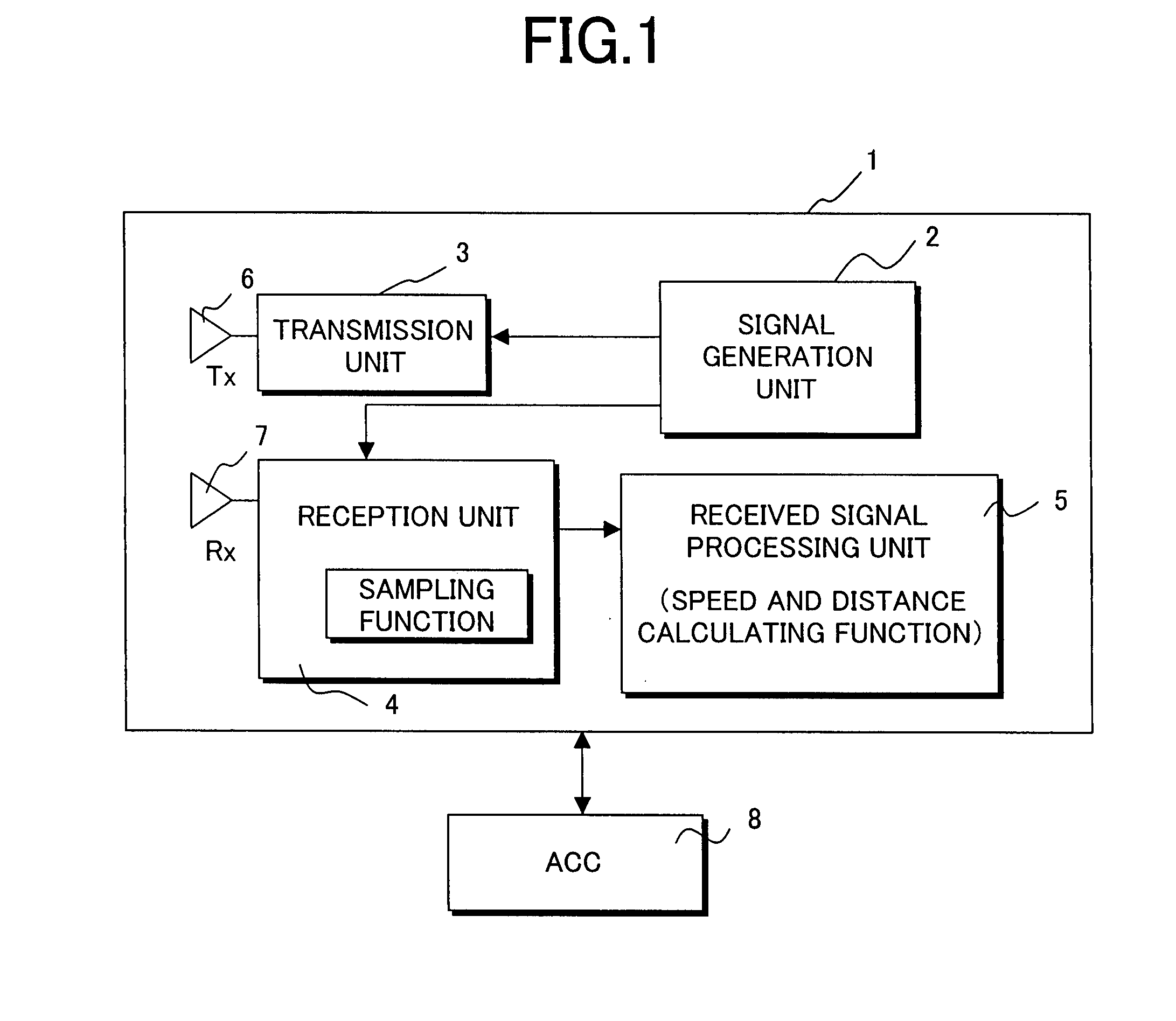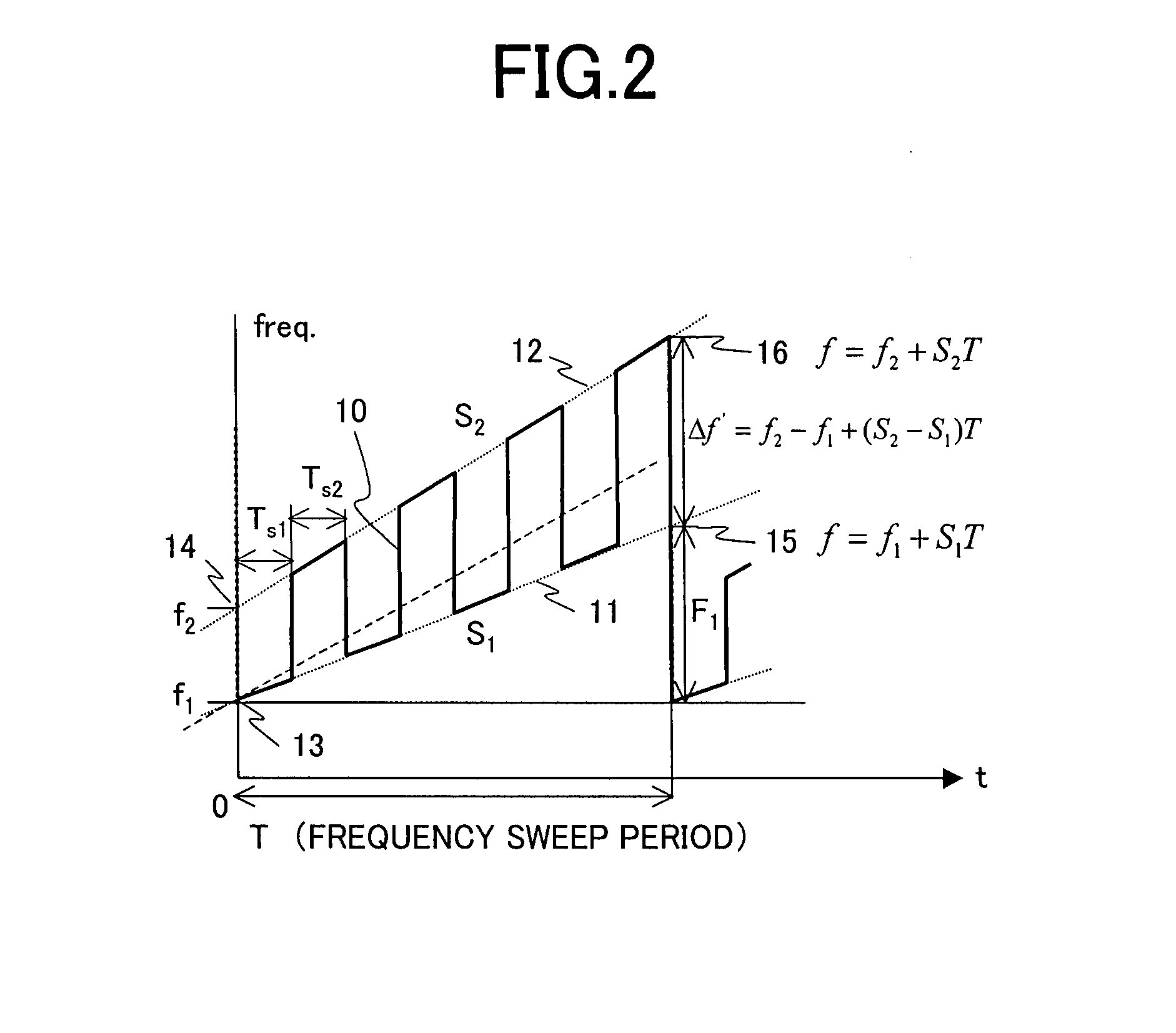Radar, radio frequency sensor, and radar detection method
a radio frequency sensor and radar technology, applied in the field of radars, can solve the problems of significant compatibility between cost reduction and high detection performance, and achieve the effect of improving detection accuracy and reducing uncertainty in target identification
- Summary
- Abstract
- Description
- Claims
- Application Information
AI Technical Summary
Benefits of technology
Problems solved by technology
Method used
Image
Examples
first embodiment
[0038]Referring to FIGS. 1 to 8, a vehicle mounted radar will now be described according to a first embodiment of the present invention.
[0039]FIG. 1 is a functional block diagram for explaining the overall configuration of the vehicle mounted radar according to the first embodiment of the present invention. A vehicle mounted radar 1 includes a signal generation unit 2, a transmission unit 3, a reception unit 4, a received signal processing unit 5, a transmission antenna 6, and a reception antenna 7. A transmitted millimeter-wave signal Tx generated through the signal generation unit 2 and the transmission unit 3 is transmitted from the transmission antenna 6, a signal Rx which is the transmitted signal having been scattered on a target to be detected is received by the reception unit 4 through the reception antenna 7, and the distance and speed of the target are detected by the received signal processing unit 5. Reference numeral 8 denotes a higher level system of a vehicle.
[0040]Th...
second embodiment
[0095]In the first embodiment, a transmitted signal alternately stays on the two frequency sweep straight lines. A transmitted signal does not always have to stay on a straight line and may be periodically located alternately along positions substantially corresponding to two frequency sweep straight lines.
[0096]FIG. 9 shows a second embodiment of the frequency modulation pattern of a transmitted signal according to the present invention. As in FIG. 2, FIG. 9 illustrates the frequency modulation waveform of the transmitted signal as a time function.
[0097]In this example, the frequency of the transmitted signal is alternately fixed at predetermined fixed values (e.g., the value of the starting point or an intermediate value) on a frequency sweep straight line 11 extended from a first initial value f1 with a slope S1 relative to the time axis and a frequency sweep straight line 12 extended from a second initial value f2 with a second slope S2, which is different from the slope S1, rel...
third embodiment
[0103]FIG. 10 shows a third embodiment of the frequency modulation pattern of a transmitted signal according to the present invention. In this frequency modulation pattern, a frequency sweep straight line 63 with a third slope S3 is provided in addition to two frequency sweep straight lines 11 and 12 having different slopes. Sweeping is performed while switching the frequency sweep straight lines, so that three frequency equations and two phase equations can be obtained for a target, five independent equations can be provided for two unknowns (v,R) of the target with three degrees of redundancy. The increased degrees of redundancy can improve the accuracy of detection that is described in the first embodiment and can further enhance the effect of removing or reducing the possibility of erroneous detection and the possibility of undetected targets, thereby improving the performance of a radio frequency sensor.
[0104]A speed v and a distance R of a target 20 are determined as an inters...
PUM
 Login to View More
Login to View More Abstract
Description
Claims
Application Information
 Login to View More
Login to View More - R&D
- Intellectual Property
- Life Sciences
- Materials
- Tech Scout
- Unparalleled Data Quality
- Higher Quality Content
- 60% Fewer Hallucinations
Browse by: Latest US Patents, China's latest patents, Technical Efficacy Thesaurus, Application Domain, Technology Topic, Popular Technical Reports.
© 2025 PatSnap. All rights reserved.Legal|Privacy policy|Modern Slavery Act Transparency Statement|Sitemap|About US| Contact US: help@patsnap.com



